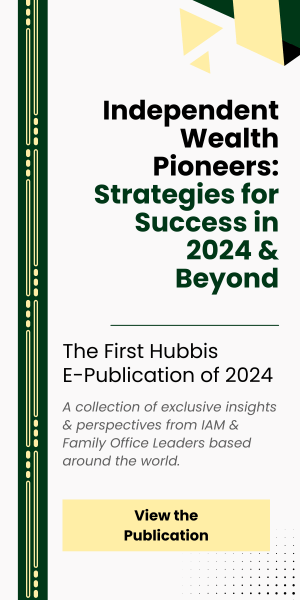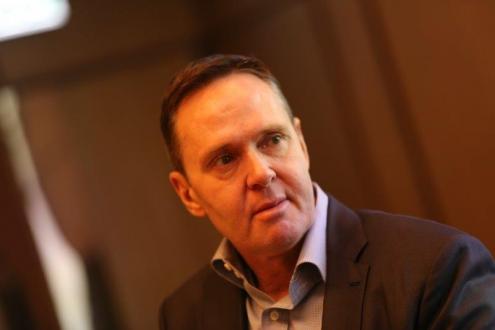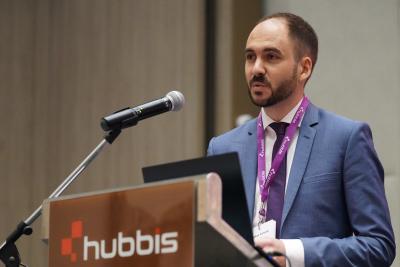Quantifeed’s John Robson and Shadab Taiyabi joined forces to present a Workshop to offer insights from Quantifeed’s recent deployments of digital wealth automation to financial institutions in Asia. They explained that leading FIs across Asia are racing to deploy digital wealth management capabilities and highlighted some of the digital wealth platforms Quantifeed has delivered. They explained how the firm’s quantitative and financial software engineering expertise is significantly enhancing and expanding the digital propositions and delivery for wealth management leaders across Asia.
Robson is Chief Commercial Officer and Head of Strategic Partnerships at Quantifeed, a Hong Kong firm that was founded back 2013. Shadab Taiyabi is Senior Executive and Head of Strategic Partnerships for Southeast Asia. Both are therefore at the forefront of the firm’s relationship building and platform delivery across the region.
Armed with video and slide presentations, they delivered an excellent Workshop that offered delegates deep insights into some of the platform solutions that Quantifeed has helped create in the region.
Revving up the QEngine
Robson explained that Quantifeed today comprises some 40 engineers building the ‘QEngine’ platform. “At the very centre of this QEngine is our core common code base,” he explained. “You can think about that as incorporating three particular core modules, namely Investment Products, Investment Advisory and Trade Management.”
He explained that the Investment Products portion of the platform has the capability of taking a very broad list of funds and products and turning them into portfolios.
And Investment Advisory is all about the essence of advice, helping customers understand what they need to hold so that it either matches their risk profile or so that it helps them achieve their goal. “In this module,” Robson reported, “we have things like a risk profiling questionnaire that maps out to a model portfolio, or we have for example goal-based investing where you set the parameters of when you will need the money and how much money you might need, so that a wealth plan is created.”
Trade management’s core capability is to manage trades for model portfolios. “That is not quite as easy as it might sound,” as you know, but our solution provides this both remarkably efficiently and seamlessly,” he noted.
He added that there are also an array of other capabilities, such as sending out notifications to clients, for example to alert them to rebalance their portfolio, or for research and analytics delivery.
Your all-in-one suite
The capability of the QEngine has been packaged into a suite of readily available applications that are used by different user-groups in each financial institution. “The QEngine Suite of applications services different users,” he explained, “and each of the applications is fully integrated, streamlining workflows, reducing cost and improving regulatory compliance in your business. QEngine’s Customer provides access portfolios; QEngine Advisor allows customer management and advisor-led discussions to take place, QEngine Portfolio Manager enables the CIO to load and manage portfolios which are then available to the advisors and customers; while QEngine Administrator governs the access right and reporting requirements.”
Taiyabi then showed an excellent video presentation which gave delegates some fascinating insights into the DBS digiPortfolio platform that Quantifeed had helped the bank create and that became functional first earlier this year.
DBS, said Taiyabi, is with the DBS digiPortfolio service now delivering Asia’s first robo-advisory based on in-house discretionary management, combining human expertise with robo technology. He said that this is a great example of a bank that has imagined and created a remarkably successful digital robo-advisory platform.
A pleasing outcome
“We have helped them launch an easy-to-use product, a risk-based investment solution that really works in practice,” he told delegates. “It offers customers a range of model investment portfolios that are designed to match their risk tolerance and needs. And it does so while delighting the customer with how easy and pleasant it is to use.”
He explained that digiPortfolio is an investment portfolio built by human expertise powered by robo technology. Clients of any size, even those with just one thousand Singapore dollars to invest, can log into DBS iWealth, set the risk level they are comfortable with, input the investment amount and be delivered a diversified portfolio that will be monitored and rebalanced when the markets move.
And all this can be done in a few minutes with details input online and the portfolio tailored following the answer to only three questions for the customer as to their character, expectations and their risk tolerance.
The risk-based platform
“We call digiPortfolio a risk-based investing platform,” Robson explained. “It allows an organisation to take the risk temperature of the customer and match it to a model investment portfolio, and then it rebalances the investments on a regular basis when drift has occurred in the customer’s holdings or when the CIO has applied a tactical or a strategic asset allocation shift. And this is for literally anyone, not only HNWIs. In short, DBS has achieved what so many other wealth management providers want to deliver, a personalised product for customers of all ages and across the wealth spectrum.”
“Their solution is fully automated,” Robson added, “and helps bring discretionary portfolio management services to a broader cross-section of their customers. The DBS offering includes best-in-class investment management, low minimum-investment amounts, and easy top-ups or withdrawals. And, of course, packaged in an intuitive user-friendly journey.”
“Customers have access to a set of diversified multi-asset portfolios matching their risk-return requirements,” he reported, “and they have access to leading specialist asset managers. Additionally, there is regular portfolio rebalancing. And with automation across all functions, it has been built to scale.”
The goals-based protocol
He also highlighted another approach, this time from Taiwan’s Cathay United Bank in the form of a goals-based investing platform. “Cathay took that route, goals-based, while DBS has gone the risk-based route, but the two are closely connected with customer risk profiling and a mapping to a suitable investment portfolio as the building blocks of both offerings.”
The goals-based platform gathers more inputs from the investor at the outset. These relate to the target amount of the financial goal which could be things such as retirement or a child’s education and the ability to save regularly into the wealth plan. Then, as with the DBS model it recommends a portfolio into which the customer will regularly invest with the aim of reaching the goal by the target date.
“Cathay’s solution is a very interesting tool for a financial institution to be able to offer their clients,” he remarked. “And it dovetails very nicely with having an adviser in the picture if they so want, although Cathay has started with a direct-to-customer offering.”
Other success stories
They turned then to other solutions, Taiwan’s SinoPac Securities, which deliver the ability to buy model portfolios of shares or ETFs that track a theme. “For example, an investor might want to follow the 5G theme, or driverless cars, or another theme,” Robson explained. “The solution we created offers a rigorously constructed portfolio that accurately tracks each theme.”
Taiyabi then took the floor again to mine down further into the deployment of the Quantifeed solutions. He explained that the key is to include the optimal universe of mutual funds and ETFs. “And in Asia at this time,” he explained, “many of the platforms that are being launched are using the funds because they offer the best managers with the broadest range of access to different asset classes.”
Taiyabi then delved into considerable detail about how the technology works in practice and solves issues such as managing the minimum order constraint, allocating assets, handling overdraft protection and so forth. “The key,” he commented, “is that we offer the capability to scale wealth management with technology while also catering to each customer, for every one of their requirements and positions is unique. We can handle both scale and personalisation.”
Being intuitive
“Another thing the platform needs to do is deliver an intuitive experience,” Robson added. “So, if a client wants to add USD10,000 to his portfolio we have optimised the top-up and withdrawal algorithms that so that the buy and sell orders can be easily understood. This avoids your call centres suddenly flashing red lights all day.”
Embrace, scale up, succeed
Robson closed by reiterating that the wealth management industry’s customer engagement will be dramatically enhanced by technology. “Many of the financial institutions represented here today spent years and many millions of dollars acquiring your customers. They represent your company’s most valuable asset – an asset which you cannot afford to lose. There is a unique opportunity to deliver effortless wealth management to these customers at scale. And as you will have now seen from the solutions we have provided to some high-quality names in this region, we are able not only to imagine but also to realise these goals.”

Chief Commercial Officer at Quantifeed







